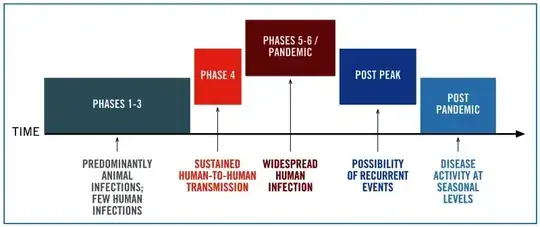I've come across papers that plot the duration of an epidemic using a parameterized model, and papers that calculate the expectation of the duration. But I'm looking for how the duration is defined.
At least one paper gave indications that it was taken to be the time at which the number of infected individuals peak. I guess is OK if you consider that epidemic isn't normally used to refer to the situation where number of infected people decline starting from time zero, i.e., there is no period of growth. I also guess that one way for this to happen is if some experimental virus gets released, infecting a lot of people locally, but it is not easily transmitted.
Even if there was a period of growth followed by decline, however, I naturally think of duration as the width of the pulse. For example, optical pulse widths are often measured using full width at half maximum. So I'm wondering if there is a commonly accepted formal definition that recognizes the end time of the epidemic, e.g., perhaps based on how near it gets to steady-state conditions (notionally at time infinity) or some other intuition-motivated criterion.
